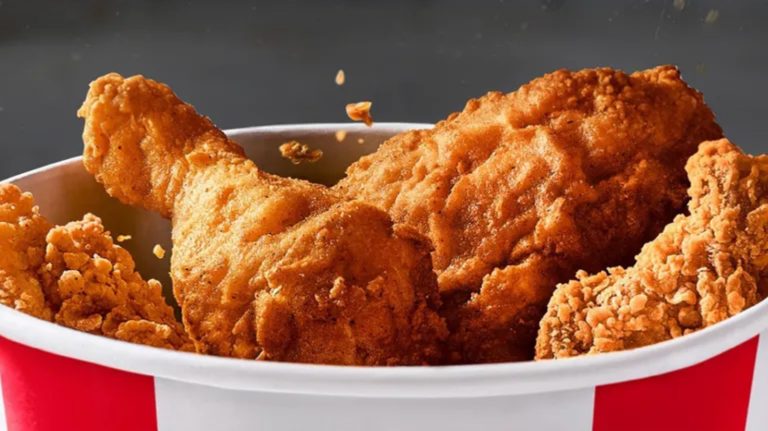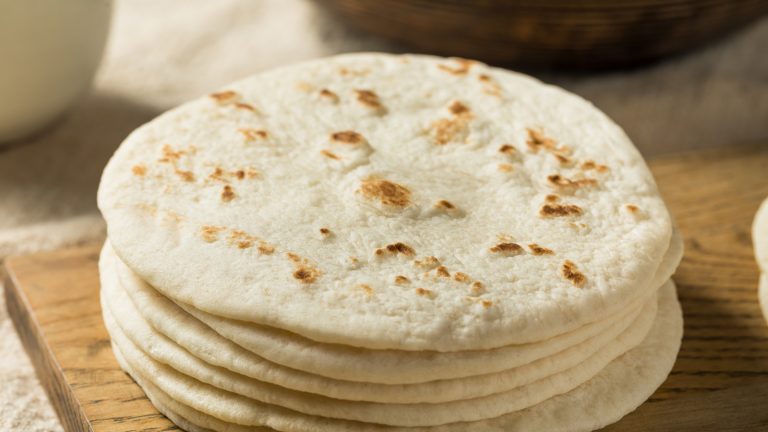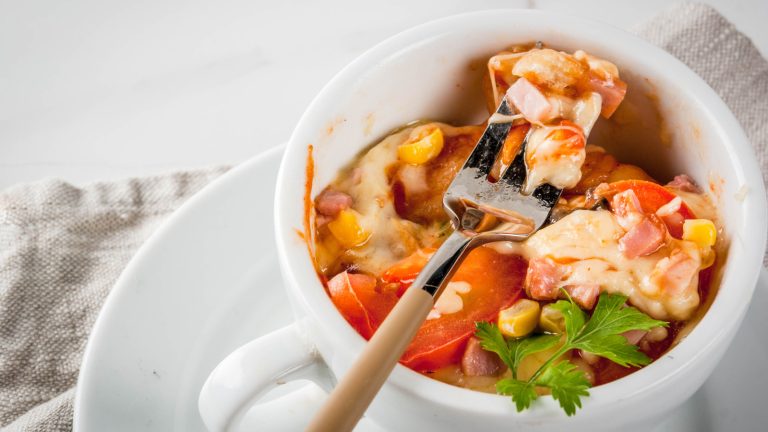We may receive a commission on purchases made from links.
Almost any carnivore will tell you that there’s something special about a really good steak, and there’s no doubt that going to your favorite steakhouse is an experience to be savored. There are a number of ways you can help make sure you get the best dining experience possible at said steakhouse, and we’d say that it starts with understanding how restaurants prep those steaks.
Most restaurants use the wet-aging method, which is sealing meat in its own juices for between one and three weeks. Some places, however, go above and beyond with dry-aged steaks, and the difference is an important one. Dry-aged steaks age in the open air while being kept in an environment that’s carefully controlled. That exposure causes mold to grow, and when these steaks are finally cooked and served, they’re more tender and have a much more complex flavor that’s sometimes described as a mix of a bitter and nutty earthiness that might be downright weird if you’ve never had dry-aged steak before.
Dry-aged steak is something that every steak-lover should have at least once, but sadly, there are only a handful of steakhouse chains out there that are serving this particular style of steak. That’s kind of a bummer, but it’s not all bad news: Some of these chains have a decent number of locations, so while they’re mostly the kind of places you’ll need to make reservations for — and dig out your nicest clothes for — you might have one right around the corner.
A note: Why are there so few chains that dry-age?
Alongside getting into the list of steakhouse chains that do opt to dry-age, we’d like to take a minute and talk about why there are so few chains on this list. Most steakhouses will say that they wet-age steaks for a number of reasons, but the two big ones are that it’s cheaper and it’s more efficient. Dry-aging also creates a steak with a flavor profile that’s sometimes described with words like “funky,” and it might be something of an acquired taste. Wet-aged steaks are much more mainstream and appeal to a larger audience.
Dry-aging beef is also a much more specialized process that takes some serious skill, along with a special aging room that controls temperature, humidity, and air flow. It’s described as a very scientific, carefully controlled process that changes not only based on the cut of meat, but even based on the diet the cattle were raised on. In other words, it’s not easy.
The process of dry-aging steaks also means that there’s more waste — part is cut away before cooking — and it can take a lot longer for dry-aged steaks to be ready. When the bottom line matters, the difference between a 10-day wet-aging process and a 45-day dry-aging process is a big deal, and many places just don’t have the staff and the special facilities to handle dry-aging. Those that do, however, have made their steaks into something extraordinary.
Oak Steakhouse
Oak Steakhouse has gotten all kinds of attention for serving up some seriously stellar steaks, and at the time of this writing, there are nine locations either up and running or in the works, including restaurants in Nashville, TN, Atlanta, GA, and Raleigh, NC. It’s described as a modern steakhouse with a focus on serving Angus beef, and to be clear, not all Oak’s steaks are dry-aged. Those that are, however, don’t come cheap.
Check out the menu for Nashville, and you’ll see the pricing for the 20-ounce, dry-aged, bone-in ribeye is simply listed as being market price. The same goes for the dry-aged KC strip (pictured), but the menu for Charleston gives us just an idea of how much these steaks are going to set you back. Here, that 20-ounce dry-aged ribeye is $125, and for a little bit of a comparison, that’s $10 more than the price of the white sturgeon caviar.
If you can’t make it to any of these cities, we have good news for you. Oak Steakhouse’s dry-aged steaks are overseen by James Beard award-winning chef Jeremiah Bacon and can be ordered online. The idea of cooking one of these pricey steaks yourself might seem intimidating, but the best way to cook a dry-aged steak is pretty straightforward: Use a saute pan and some butter, or get out the grill.
Fogo de Chão
There are a lot of things that you should know before eating at a Brazilian steakhouse for the first time, and the basic rules include things like making sure you show up hungry and brushing up on rodizio-style dining. That’s where circulating servers slice and serve cuts of steak at your request, and it’s one of the things that makes Fogo de Chão so much fun. Given what we’ve said about how dry-aging steak is a time-consuming process that takes longer than wet-aging and is generally more expensive, it might seem surprising that this popular chain offers it. It does, but there’s a footnote.
Fogo offers the Full Churrasco Experience, which is what you’re thinking of when you think of the chain. There’s also what the menu lists as “enhancements” to the service, which are meats that include a dry-aged tomahawk. There are also the occasional tasting events, where you might get to sample a dry-aged steak — if you plan ahead and make reservations.
These dry-aged steaks are spending at least 42 days in the chain’s dry-aging cabinets, so yes, this funky bit of meat science is taking place on-site. While it might seem a little unnecessarily indulgent to go to a Brazilian steakhouse like Fogo and pay extra for still more additional meat, those who are in the know say that not only is it worth it, but you’ll be wanting to repeat the experience.
Smith & Wollensky
Smith & Wollensky is a steakhouse that doesn’t feel like a chain. It is, after all, where an anonymous bidder spent an afternoon dining with Warren Buffett after offering up the eye-watering sum of $19 million (and don’t worry, it was to support a charity called GLIDE). The good news is that you won’t need to be a millionaire to sample this chain’s high-quality steaks, and that includes the multiple dry-aged selections on the menu.
Taking a peek at Boston’s menu, we see there’s dry-aged T-bones, porterhouses, ribeyes, New York cut, and even a Cajun-marinated ribeye that sounds downright delicious. Add Cajun flavors to the unique earthiness that dry-aging brings out, and even if it’s going to cost you just over $100 (at the time of this writing), you just might feel like you’ve gotten something that’s worth a million (or few).
Other locations have similar menus, albeit with slightly different pricing. Smith & Wollensky ages its beef for around 28 days, noting that the extra time, care, and work are absolutely worth it for the steak that finally makes it to the plate. Steaks are hand-cut, the butchers are experts at what they do, and customers say that it’s so good that it’s a completely legitimate alternative to one of the most famous steakhouses in the world — Peter Luger.
Fleming’s Prime Steakhouse
Fleming’s Prime Steakhouse is a pretty interesting example of how the restaurant industry works. While Fleming’s is a high-end steakhouse offering only the best cuts of prime beef and priding itself on quality, preparation, and a personalized experience for each guest, Outback Steakhouse, well, doesn’t. Those two are owned by the same parent company — Bloomin’ Brands — and that’s some interesting food for thought. Fleming’s offers a number of dry-aged options, as the chain notes that it offers both dry- and wet-aged steaks, and the process depends on what the expert butchers there decide for each specific cut.
It advertises its dry-aged ribeye as perfect for “adventurous steak connoisseurs,” a nod to the unique flavors that a dry-aged steak brings to the table. While the restaurant’s sister company might leave people asking what makes the Bloomin’ Onion so gosh darn delicious, Fleming’s has a specially trained chef on staff just for overseeing the steaks.
And that was kind of always the thing at Fleming’s. Founded in California, the idea behind the chain was always a high-end steak experience, and plenty of customers have headed to review sites to note that those expertly trained chefs are still knocking it out of the park.
Morton’s The Steakhouse
There are plenty of restaurants and companies that make a big deal about secret recipes and ingredients, but interestingly, Morton’s The Steakhouse is kind of the opposite. Anyone who loves this place definitely needs to pick up copies of “Morton’s The Cookbook: 100 Steakhouse Recipes for Every Kitchen” and “Morton’s Steak Bible: Recipes and Lore From the Legendary Steakhouse” for a neat behind-the-scenes peek at things. Perhaps there’s no fear in giving out some of these secrets, because a big part of what makes Morton’s so famous is the dry-aged steaks that aren’t exactly easy to duplicate at home.
Morton’s doesn’t seem to be doing any of the aging or even cutting on-site, noting that there is a supplier network that’s doing all that instead. By the time the steaks actually get to the restaurant, they’re already ready to go — which makes sense from a business standpoint.
On the regular menu, that includes a dry-aged ribeye and a Kansas City strip, but it’s worth noting that if this is your steakhouse of choice, you should definitely keep an eye out for special events. The Best Steak Anywhere event, for example, gave customers a chance at Australian Wagyu, Wagyu ribeye, and some locations also offered a dry-aged prime porterhouse as part of the menu. These events are limited-time offerings, and reservations are needed, so planning ahead is a must.
Wolfgang’s Steakhouse
Sorry, everyone on the West Coast: Wolfgang’s Steakhouse only has a handful of locations in New York City, New Jersey, and Hawaii, as well as an international presence in Japan, Manila, China, Hong Kong, and Korea. This ultra-chic steakhouse chain is the brainchild of Wolfgang Zwiener, and his story is a pretty wild one. Zwiener emigrated to the U.S. from Germany in 1960, and he ended up as a waiter at one of the country’s most famous steakhouses, Peter Luger. When Zwiener moved on to open his own steakhouse, one of Peter Luger’s owners reportedly scoffed, “He was just the waiter.”
Zwiener, we like to think, told that owner to hold his beer, while he went on to oversee a series of restaurants serving his personally selected sides and steaks that are dry-aged on location at each restaurant. All steaks are prime black Angus, spend weeks aging to perfection, and are served in restaurants that stress not only high quality, but the kind of classy atmosphere that’s a special-occasion type of thing for most people.
At the time of Zwiener’s 2025 death, his business had grown to 35 restaurants, and those who have reviewed the chain report perfectly-cooked steaks served by knowledgeable staff in a formal but friendly atmosphere. The incredible texture and flavor of the dry-aged steaks gets a regular mention in reviews, with customers adding that while it might be too expensive for an every week sort of place, it’s perfect for special occasions.
The Capital Grille
When we here at Tasting Table ranked U.S. steakhouse chains, several of the chains we’re talking about in terms of dry-aged steak made it to the top of the list. The top four — Morton’s The Steakhouse, Fleming’s, Fogo de Chão, and the number one chain, The Capital Grille — all offer dry-aged steaks, and it makes sense that these would be the best of the best. The process is the kind of thing you’re only going to do if you’re serious about steak, and The Capital Grille is definitely that.
The dry-aging process here is done in-house, and steaks sit for between 18 and 24 days. It also makes sense that when we ranked some of The Capital Grille’s best, must-not-miss dishes, it was the bone-in ribeye that took the top spot. (The tenderloin and lobster tail combination plate also received high praise.)
We’re not the only ones who think this is just a stellar chain. At the time of this writing, there are over 12,500 New York City restaurants listed on Tripadvisor, and The Capital Grille is number 68. That’s a position you might expect to see a celebrity chef’s steakhouse in, not a chain. Still, customers note that even with the plethora of steakhouses in the city, it’s a go-to for outstanding, dry-aged steak that’s big enough to share … and good enough that you’re not going to want to. Pair that with a selection from an extensive wine list, and it doesn’t get much better.
Del Frisco’s Double Eagle Steakhouse
One of the nice things about Del Frisco’s Double Eagle Steakhouse is that even though there are only 17 locations as of the time of this writing, restaurants are comfortably spread out across the country. No matter where you are or where you’re going, there’s a good chance you can stop in Boston or Dallas, Denver or Indianapolis, Los Angeles, Vegas, or D.C. (among other major cities). The chain’s dry-aged offerings include a prime strip and a ribeye, and they’re aged for 45 days.
Generally speaking, the dry-aging magic really happens when meat is allowed to age for between 30 and 45 days. Any less, and the flavors might not be as well-developed. Any longer, and the steaks will start to take on flavors that we’d say are something of an acquired taste. Del Frisco’s 45-day cutoff means that you’re getting the best of dry-aged flavor in a way that’s more widely appreciated than some of the other, more extreme time frames you might here referenced.
Customers largely agree that it’s worth opting for the dry-aged steaks, with some even appreciating servers who waited at the table to make sure steaks were cooked to the customer’s preference. Yes, it’s pricey — and that gets mentioned a lot — but it’s rare that good things come cheap.
STK
While most of the chains we’ve been talking about have only a few dry-aged steaks on offer, STK’s menu includes a dry-aged Delmonico, bone-in strip, a porterhouse, and a tomahawk. At the time of this writing, there are 25 locations, most along the East Coast, with outliers in Dallas, Chicago, and Nashville. As for atmosphere, think of the sort of place where there’s a lot of Champagne flutes, white leather, and giant, inexplicably perfect flower arrangements.
Surprisingly, reviews for STK aren’t as across-the-board high as you might expect. Customers report something of a mixed bag when it comes to the steaks here, with a lot of complaints about steaks with odd textures, and an experience that generally wasn’t worth the price. In all fairness, others describe this as a super-fun place that’s maybe more relaxed than it looks like it should be, but it’s the word “mediocre” that pops up a lot. But we do have good news for you.
If you don’t feel like getting dressed up and heading out onto the town after reading those reviews, you should definitely check out the STK Market. STK’s online butcher ships steaks anywhere in the U.S., and that includes some options with some of the same dry-aged cuts that are served in the restaurants, like the Delmonico ribeye and bone-in strips. Yes, you might want to consider dry-aging your steaks at home, but we would also recommend trying some steaks that have had the hard work done for you first.
Mastro’s
A quick glance at the appetizers can tell you a lot about a restaurant, and Mastro’s appetizers include lobster, calamari, oysters, crab, and shrimp — and the prices on many of those are simply listed as depending on the market. You know you’re in for something ultra-fresh and extra-special, and that includes a dry-aged, bone-in ribeye. If you’ve noticed that many of the places that offer a dry-aged steak use a ribeye, we noticed that, too: That’s often used because it’s a cut that has the perfect distribution of muscle and fat that allows for the process to thoroughly change both texture and taste.
Mastro’s version is — at the time of this writing — a 23-ounce ribeye that will set you back $89. That sounds like a lot, but for comparison, the regular ribeye is a 22-ounce steak that costs $77. In the grand scheme of things, that’s not much of a difference. If you’re already going out for dinner, why not spring for the dry-aged?
And customers agree that you’re not going to go wrong here. Tripadvisor has Mastro’s as one of the top-rated restaurants in Beverly Hills as of this writing, with the ribeye getting a frequent shout-out from customers. Mastro’s is also one of the top-tier restaurants in New York City, and if there’s one thing we can always count on New Yorkers for, it’s good taste in dining experience. Oh — and honesty.





